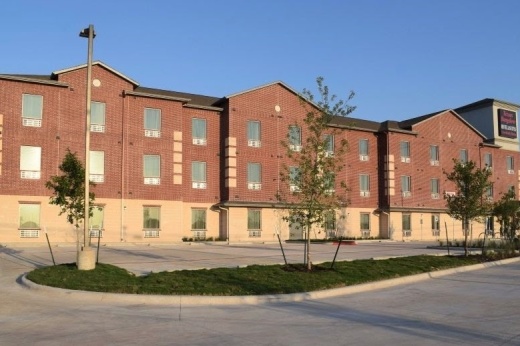During a Sept. 22 briefing about the city's work addressing homelessness, Homeless Strategy Officer Dianna Grey said Austin remains focused on establishing more shelter space and permanent homes.
“We know that helping people access permanent housing is the only real solution to homelessness, and it’s our north star. However, we also know that that’s going to take time, and we continue to work on addressing the immediate challenges that are related, in particular, to unsheltered homelessness," she said.
Hundreds more units of both shelter and housing are now in development and expected to come online in the near future, Grey said, as targets set through the Finding Home ATX initiative start to be attained.
Finding Home stems from a regional summit held in Austin last year that gathered local governments and community groups to chart a path toward significantly reducing homelessness in the area. Top goals of the summit plan include housing 3,000 people and building more than 1,300 new housing units through 2024. Stakeholders estimated that could cost $515 million to achieve, and more than $420 million of that total has already been committed among the city, county, other organizations and philanthropic sources.
As of this month, Grey said around 1,000 of the new housing units called for in the Finding Home plan are either in development or well on their way toward construction. That total includes both permanent supportive housing, where residents receive housing assistance and support services in an independent space, and more temporary rapid rehousing units. Grey said a notable addition will be the 171-unit Espero Rutland expected to open in early 2023, followed soon after by around 200 more units at three converted hotel properties across North Austin.
Mayor Steve Adler and several private-sector partners also announced a new training program this month aimed at improving how local organizations establish permanent housing for those in need. As of this summer, the Austin area was home to more than 4,000 people experiencing homelessness including more than 3,000 who are unsheltered. Shelter efforts
Grey also addressed statistics shared during a recent update on the progress of Austin's Housing-Focused Encampment Assistance Link, or HEAL, initiative. HEAL aims to move residents of public encampments identified as especially large or unsafe into shelter—and eventually housing. Between June 2021 and this August, the program sheltered a total of 361 people and moved 108 into a permanent home.
Grey said HEAL has represented the "humane way" to handle such encampments since the passage of Proposition B last spring recriminalized camping in public. However, the city is still working to improve the HEAL system given the number of people who ended up leaving.
Along with more than 100 housings, 117 HEAL clients remain at a shelter while 118 have left and returned to homelessness.
“That number, from our perspective, is too high and we will be seeking to decrease it over time," Grey said.
Of that group, 44 remain engaged with housing case management to potentially link them with housing, while 74 are no longer enrolled in those services. After more than one year of HEAL, Grey said the city wants to enroll people in housing services quicker to ensure that connection is eventually made, improve community- and relationship-building in shelters, and maintain "low-barrier" shelter operations for clients until they can firm up their housing plans.
Funding progress
Grey also noted that a portion of the approximately $100 million American Rescue Plan Act dollars City Council has reserved for homelessness were recently sent toward shelter work as well as rapid and permanent housing alongside millions more from the city health department's budget.
The city will also track the success of nonprofits and service providers more closely to make sure that funding is spent effectively. Grey said one piece of the city's recent funding, which split nearly $19 million among multiple agencies for HEAL and rapid rehousing work, could bring 1,000 people off the streets.
Grey and other leaders have said since its start that the Finding Home strategy would experience a slow start as dollars were distributed and new home construction began. After a "ramp-up" in 2021 and this year's updates, she said program results will likely be more noticeable beginning next year.
"We just markedly increased the capacity in the community to rehouse people, and we are on track to create the number of units, but those will be coming online gradually," she said. "We believe that really starting in calendar year 2023 is when we’re going to see a dramatic increase in our program capacity."
A separate portion of federal relief dollars is also in line to be spent on homelessness in the near future. Following the Sept. 22 briefing, the city asked community members to begin weighing in on how Austin should use its $11.4 million in HOME-American Rescue Plan funds before Austin submits its finalized plan to the U.S. Department of Housing and Urban Development. Residents can provide feedback online and during a public hearing at the Community Development Commission's Oct. 11 meeting.





